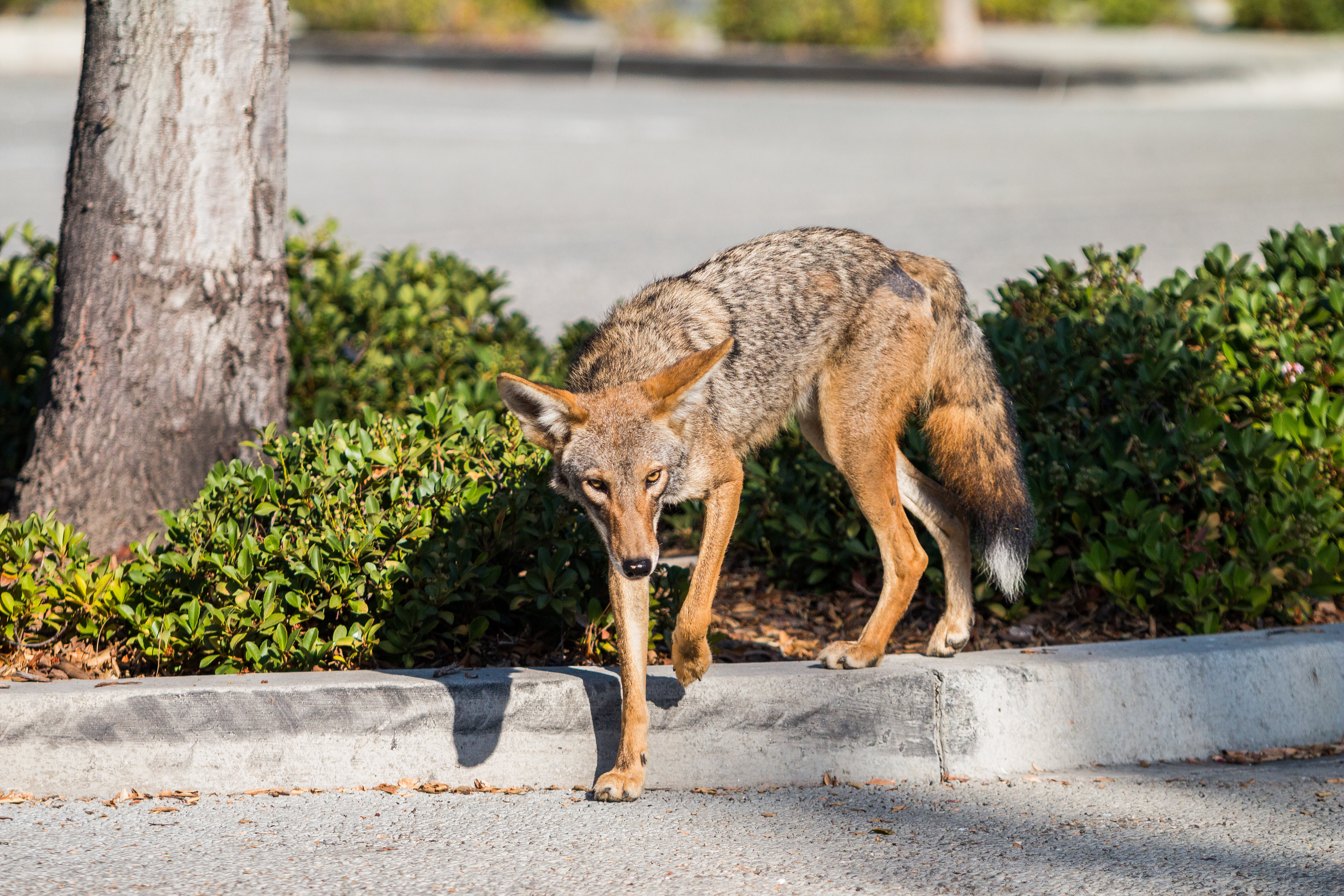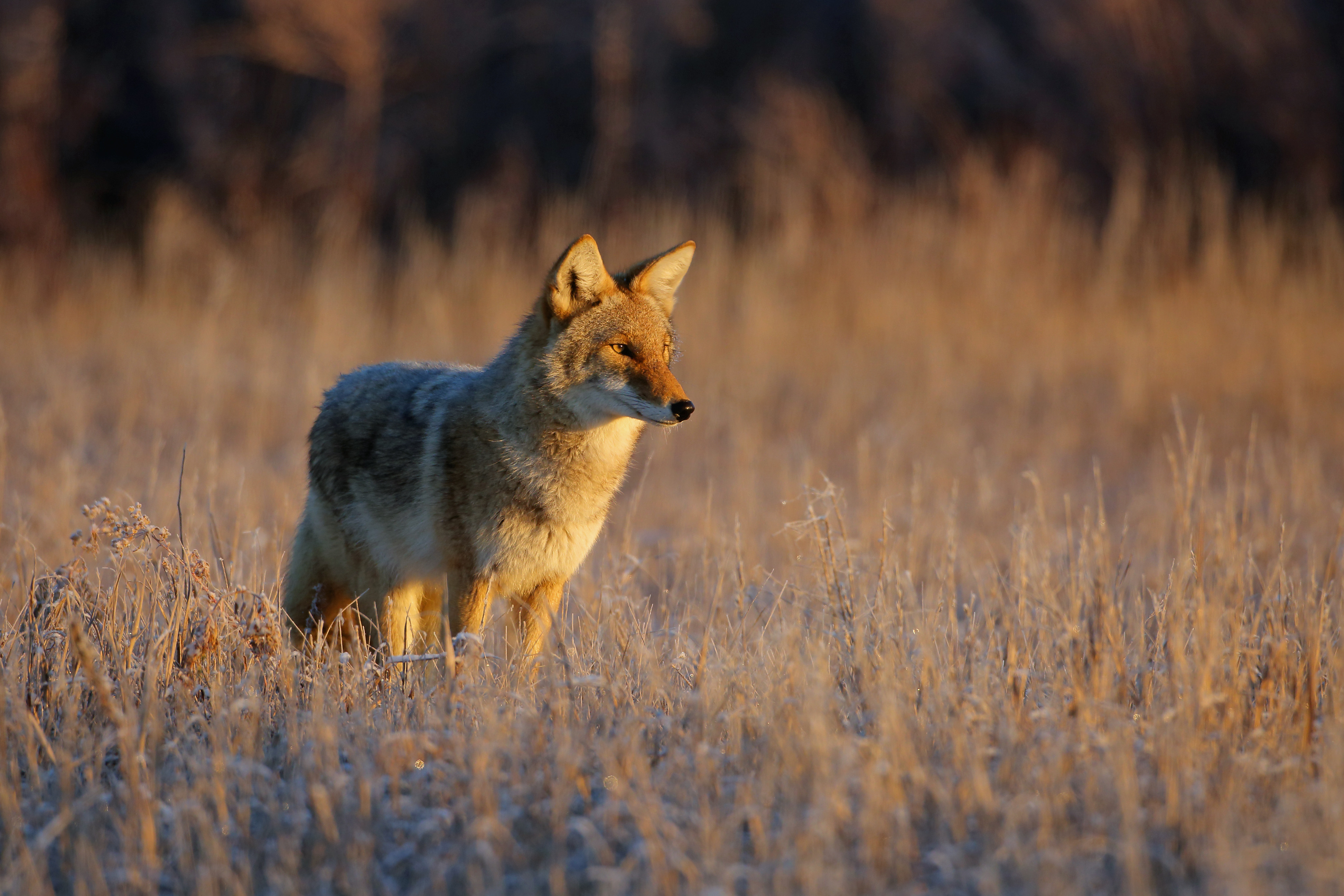
Massive / Source photo: USFWS
'Hyper urban' coyote genomes are growing apart from their city and rural cousins
Humans’ built environment has consequences even for creatures that seem to thrive in cities
Imagine a coyote, rangy and resilient. Is she ambling through a canyon dotted with sagebrush — or loping in an urban alley lined with dumpsters? In recent decades, the latter has become a more common sight. As cities expand, coyotes move right in. Rather than shrinking from the big-city lights, they rummage for opportunities.
But even as individual coyotes thrive, cities' built features are shaping their genomes across generations, according to a recent study in the Journal of Urban Ecology. A widening genetic gulf separates city coyotes and their country cousins. And as urban space sprawls, coyotes’ genetic diversity declines. This finding suggests that humans’ built environment has consequences even for creatures that seem to thrive in our midst.
Scientists already know city coyotes tend to differ from their country counterparts in behavior: they’re bolder and more exploratory, more likely to eat human-sourced foods and occupy a smaller territory. But the picture of what genetic differences — if any — might exist between coyotes has been more murky.
About 30 years ago, few genetic differences existed between coyotes across North America — suggesting coyotes moved freely, and so did their genes. Historically, coyotes ranged only across the arid West and Great Plains. Since 1900, they have been pushing out of their home turf, and today they prowl the continent from coast to coast. Scientists assumed that mobile, adaptable coyotes weren't impeded much by urban sprawl. More recent studies have found coyotes clustering genetically by range or region, but few have honed in on specific urban areas.

Urban coyote
National Park Service
By narrowing their focus to the greater Los Angeles area, scientists from Pepperdine University uncovered a more complex picture lurking in urban coyotes’ genes. Pulling DNA from 125 samples of muscle, liver, and skin, they examined coyotes living in mountains, farmland, suburbs, and the city. The team mapped coyotes’ genetic structure alongside the surrounding landscape, accounting for key urban features like freeways and road density.
A clear split between urban and rural coyotes emerged. Rural coyotes living among mountains and natural vegetation formed the largest, most genetically diverse group. Urban coyotes, on the other hand, made up three distinct clusters — each with decreased genetic diversity. Researchers could deduce which coyotes roam wide-open spaces and which dodge city traffic.
Rural coyotes shared a similar genetic profile even across long distances, suggesting natural barriers didn’t impede their movement or gene flow. Even in coyotes separated by 160 miles, rural coyotes clustered with each other instead of their urban counterparts nearby. The surrounding environment mattered more than the geographic distance.
Why this genetic split between city and country coyotes? It could stem in part from “natal-biased habitat dispersal,” the researchers suggest. Animals tend to prefer habitats similar to where they grew up. When an urban coyote knows how to avoid the city’s hazards and harvest its resources, she is more likely to raise babies with those skills. And when generations of street-smart coyotes stick around the same spot, the genetic gap between them and their country cousins widens.
But this isn’t the whole story, the researchers argue. City coyotes weren’t just genetically distinct from their rural relatives; their DNA also differed from that of other city coyotes. Rather than forming one large group as the rural coyotes did, urban coyotes split into three genetically distinct populations.
The cities’ built features help explain why. One distinct cluster of city coyotes prowled through downtown Los Angeles, lurked by the Hollywood sign, and roamed near the Long Beach Airport. The coyotes in this cluster had both DNA and habitat in common — “hyper-urban” areas with high road density.
Scientists found a similar pattern in Orange County. Where major highways and commercial districts sliced through the land, so did a boundary between two distinct coyote populations. Despite roaming a similar urban environment, coyotes on one side of the highway were genetically distinct from their relatives on the other side. Coyotes' genetic structure mirrored the urban terrain.

Coyote
Peter Eades / USFWS
These findings suggest humans’ built environment shapes coyotes’ movement, the researchers argue. Major freeways, dense roads, and human development prevent urban coyotes from crossing into other areas. These built barriers keep old residents in, and new migrants out — and thus leave a stamp on coyotes’ DNA across generations.
This is important because when a population becomes isolated, their genetic diversity tends to dwindle. Genetic diversity reflects a population’s overall health, as well as an ability to adapt to future changes in the environment. Think of it like a box of tools passed down for a vast, unpredictable, multi-generational home restoration project. If the roof collapses or the plumbing busts, you’re going to need more than just a hammer. The more options you have, the better — whether they’re hand tools or genes. Each genetic characteristic represents another option, in a toolbox of past solutions and potential answers.
Even as individual urban coyotes thrive, their collective genetic toolbox shrinks. The city’s built features restrict urban coyotes’ travels more than previously thought, with significant effects on their population genetics. These findings suggest that urbanization even takes a toll on creatures that seem to flourish in human environments.
This result also points to the importance of preserving natural corridors in cities — not just for coyotes, but for other urban wildlife, too. Safe passageways allow diverse species to cross between habitats, enabling both physical movement and gene flow. Los Angeles County has made natural corridors a priority by identifying Significant Ecological Areas (SEAs) and planning links between them. In fact, in 2023, Los Angeles is slated to become home to the largest wildlife corridor in the world — a highway overpass in the works since 2019.
Coyotes have a reputation as survivors, adaptable and enduring. But urbanization is also here to stay, and scientists are still learning about its genetic implications for our wildlife neighbors. This study highlights the value of better understanding these effects on all creatures in the urban landscape — even the most versatile and wily of them all.



This is incredibly interesting and shines a much brighter light on the biological and ecological realities of urban coyotes. I find it particularly strange that they are isolating themselves into urban “subgroups,” per se. I’m intrigued by this, as research has also shown that coyotes can become increasingly bold and exploratory - altogether, synanthropic - over generations. That, to me, means that they would also find themselves interbreeding with that subpopulation, something that should overcome these genetic “islands” we’re seeing. Perhaps the time it takes for these increasingly bold generations to join the hyper urban subpopulation is too long to be considered standard gene flow. Either way, the number of ways in which we’re now seeing coyotes adapt to anthropogenic activity is astonishing. Just like their genetic distinctions, they are separated by unique behavior and cognitive capacities as well, between urban, rural, and “natural” coyotes. I’m excited to see what more we uncover about this canine into the future.